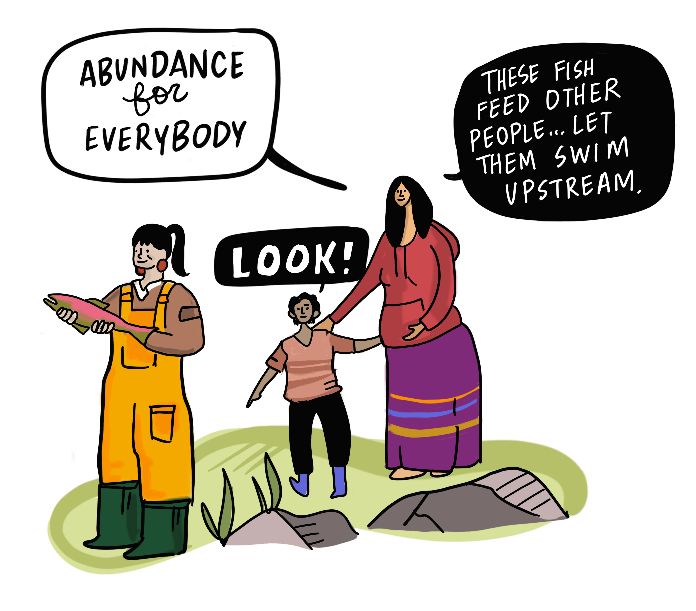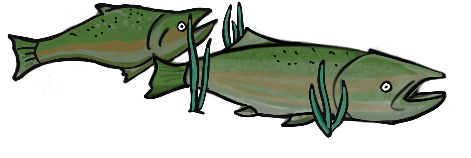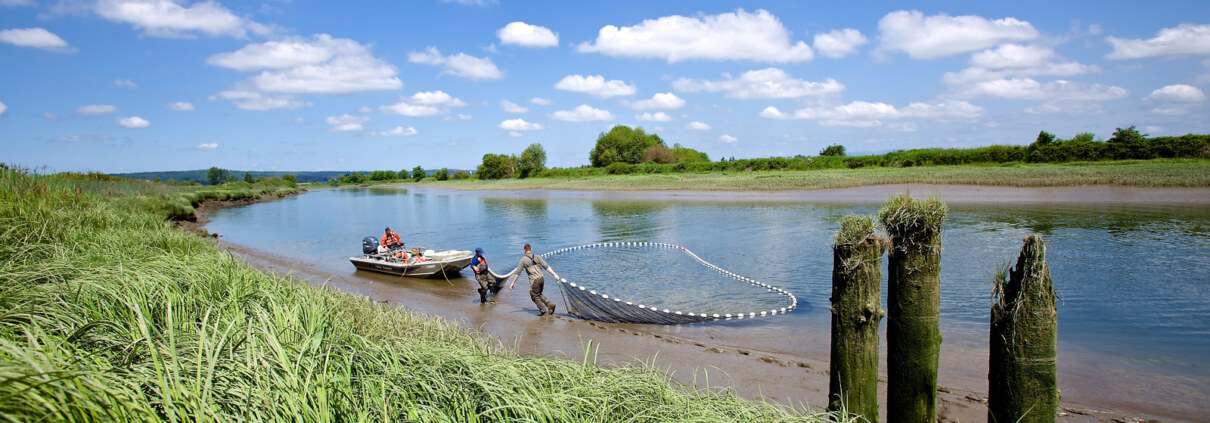Salmon recovery lessons from the Evergreen State
Patchwork efforts to manage and conserve salmon in B.C. lack coordination. A tried and tested model from Washington state inspires planning for a new provincial salmon recovery strategy.
This story originally appeared in the Winter 2023 edition of Salmon Steward, the Pacific Salmon Foundation’s quarterly print magazine.
Salmon experts in B.C. are exploring solutions to this dilemma at a time when nearly half of salmon populations in the province are in some state of decline.
Through a forum called the Pacific Salmon Action Dialogues, a partnership between PSF and the First Nations Fisheries Council of B.C. (FNFC), with collaboration from salmon leaders across the province, participants came to a consensus that B.C. needs a new collaborative structure for salmon recovery. Their discussions have drawn inspiration from the Washington State Salmon Recovery Strategy.

The illustrations by Erica Bota represent aspirational themes of the B.C. salmon recovery strategy discussed by participants of the Pacific Action Dialogues.
PSF and FNFC tapped salmon biologist Tom Rutherford, who formerly worked for DFO and is currently Director of Strategic Priorities for the Cowichan Watershed Board, to help scope what a “made in B.C.” salmon recovery model could look like.
Based on Rutherford’s research, British Columbia can learn from the ‘Washington Way’, which has two decades of real-world applications.
“We’re at a tipping point for salmon in B.C. for many reasons — the major one being climate change. We need to do something different than what we’re doing now,” says Rutherford. “Washington has clear legislation for collaborative salmon action. With their mandates, it’s not optional. British Columbia doesn’t have those legislative requirements, so we need to work around that and find the foresight to create our own system that centres First Nations leadership.”
To begin envisioning how the Evergreen State’s methods can be applied in B.C., Rutherford interviewed Washington Salmon Recovery representatives and B.C. salmon experts to develop a roadmap.

Key ingredients for success
Following consultations with partners, Rutherford determined that a lasting British Columbia salmon recovery strategy must incorporate:
- Long-term funding
- Strong science and Indigenous knowledge to guide project and funding decisions
- Project development and implementation from the ground up, led by local communities
Participation and collaboration from Crown governments, First Nations, local communities, and environmental organizations will be necessary to activate a coordinated approach in B.C. In theory, the model would create a fair and equitable way of sharing salmon recovery decision-making and empower local watershed actors to strengthen their grassroots salmon recovery efforts.

Washington’s model operates at three levels: a Governor’s salmon recovery office responsible for state-wide and high-level coordination, regional organizations to oversee recovery plans, and watershed-based groups to lead on-the-ground habitat efforts. These three bodies work together to coordinate investments, funding, and actions.
The evolving B.C. salmon recovery strategy also proposes a three-tiered model for the province to ensure an inclusive and effective approach:
- Collaborative partnership between federal, provincial, and First Nations governments
- Regional organizations focused on recovery planning
- Place-based, watershed-focused organizations supporting technical projects
An estimated $80 million budget is required to initiate the model and advance on-the-ground work.
“When I look at the options in front of us for how can we work together to be more effective in facilitating salmon recovery, this idea of having a three-tier model is better than anything else I can think of. It might be our best option for channeling our energy, passion, and resources into something that’s really going to make a difference,” says Rutherford.



